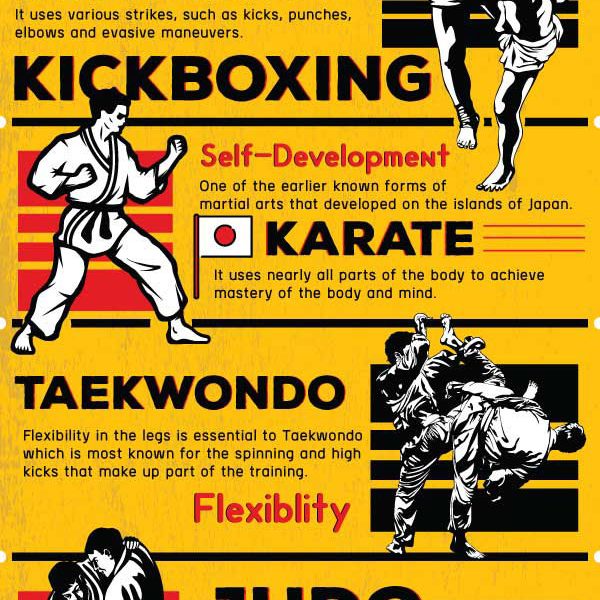Embark On A Fascinating Experience Into The World Of Martial Arts, Where The Blend Of Age-Old Personalizeds And Modern Effectiveness Waits For
Embark On A Fascinating Experience Into The World Of Martial Arts, Where The Blend Of Age-Old Personalizeds And Modern Effectiveness Waits For
Blog Article
Content By-Moesgaard Montoya
Step into the ancient globe where martial arts were substantiated of necessity in varied areas. Societies crafted distinct battling designs intertwined with historic contexts. Methods evolved over centuries with dedicated method and social exchanges. Today, modern martial arts blend conventional elements for optimal efficiency. Philosophically, martial arts emphasize self-control, self-improvement, and harmony. Regard, humility, and equilibrium are fundamental principles directing practitioners in the direction of growth and durability. Check out the depths of this rich history and ideology to reveal the profound impacts shaping this enduring self-control.
Origins of Martial Arts
Fighting style originated in different regions worldwide, evolving as practical fight systems to defend against risks. These old battling styles were established out of necessity, with each society crafting strategies suited to their one-of-a-kind atmospheres and obstacles. From the grappling arts of Jujutsu in Japan to the striking strategies of Kung Fu in China, martial arts were deeply linked with the historical, social, and cultural fabric of their respective cultures.
In Japan, the samurai class polished martial arts like Kenjutsu, the art of the sword, which later on advanced into the extra popularized type of Kendo. At the same time, in Brazil, Capoeira emerged as a mix of dance and fight, produced by enslaved Africans as a method to stand up to fascism. Each fighting style brings with it a rich background and ideology, reflecting the values and ideas of individuals that exercised them.
As you delve into the beginnings of martial arts, you reveal a tapestry of human ingenuity, durability, and the stubborn spirit of warriors throughout time.
Development of Methods
Through centuries of technique and improvement, fight strategies within different martial arts have actually undergone a profound development. From Look At This like Kung Fu and Martial arts to much more modern-day self-controls such as Brazilian Jiu-Jitsu and Krav Maga, the advancement of strategies has been driven by a combination of cultural impacts, sensible applications, and technical improvements.
One significant facet of this development is the cross-pollination of methods between different martial arts. For https://selfdefensetipseverywoman48938.theobloggers.com/41764374/making-a-decision-to-have-your-kid-participate-in-a-martial-arts-program-can-greatly-improve-their-confidence-and-strength-but-what-various-other-unforeseen-advantages-might-they-uncover , techniques from standard Japanese Jiu-Jitsu were included into the production of Judo by Jigoro Kano in the late 19th century. This blending of designs has actually led to the advancement of crossbreed martial arts like Mixed Martial Arts (MMA), which integrate elements of striking, grappling, and entry methods.
Additionally, the evolution of techniques has been shaped by the enhancing focus on performance and efficiency in fight. Experts have actually continually looked for to improve their techniques through rigorous training, testing, and competition, causing the growth of extremely specialized and reliable combating styles. Generally, the development of techniques in martial arts shows the dynamic nature of combat and the ongoing pursuit for renovation and advancement.
Thoughtful Structures
Exploring the underlying philosophical principles of martial arts supplies understanding right into their core values and directing ideas. At the heart of many martial arts disciplines is the idea of discipline itself. By training your body and mind to function as one cohesive unit, you cultivate discipline that prolongs beyond the dojo or fitness center into daily life. This technique encompasses regard, humility, and self-control, forming not just your physical abilities yet additionally your character.
Another essential philosophical structure in martial arts is the concept of continual self-improvement. The trip of mastering a fighting style is perpetual, with practitioners frequently making every effort to far better themselves, both literally and mentally. This focus on growth cultivates strength, determination, and a development mindset that can be applied to all elements of life.
Moreover, martial arts emphasize the significance of consistency and balance. Methods are developed to use a challenger's energy versus them, highlighting the concept of generating and rerouting force as opposed to meeting it head-on. This viewpoint extends to interpersonal partnerships, advertising tranquil resolutions and mutual understanding. By welcoming these philosophical foundations, martial artists not just enhance their fight skills yet likewise grow a lifestyle centered on individual growth, regard, and harmony.
Verdict
To conclude, the background and philosophy of martial arts provide an abundant tapestry of tradition, self-control, and self-improvement.
Consider example the story of Bruce Lee, who changed martial arts by mixing various styles and approaches to produce his own one-of-a-kind type of Jeet Kune Do.
Via devotion and innovation, martial musicians remain to press borders and influence others to reach their full potential both in fight and in life.
